- News & information
- About
- History
- George V. Voinovich
- George V. Voinovich Collection
- Calendar
- How to Find Us
- News
- Archives
- Photojournalism Fellowship Project
- Photo Essays
- Current Fellow
- Previous Fellows
- Reports and Publications
- Archives
- Students
- Prospective
- Center for Entrepreneurship
- Environmental Studies
- HTC/Voinovich School Scholars
- Master of Public Administration
- Current
- HTC/Voinovich School Scholars
- Center for Entrepreneurship
- Environmental Studies
- Master of Public Administration
- Alumni
- Contact
- School Leadership
- Strategic Partners Alliance
- Ohio University Public Affairs Advisory Committee
- Ohio University Public Affairs Advisory Committee
- Faculty and Fellows
- Faculty
- Visiting Professors
- Voinovich Fellows
- Professional Staff

Sound

 Sound Intensity
Sound Intensity
 Sound Intensity
Sound Intensity
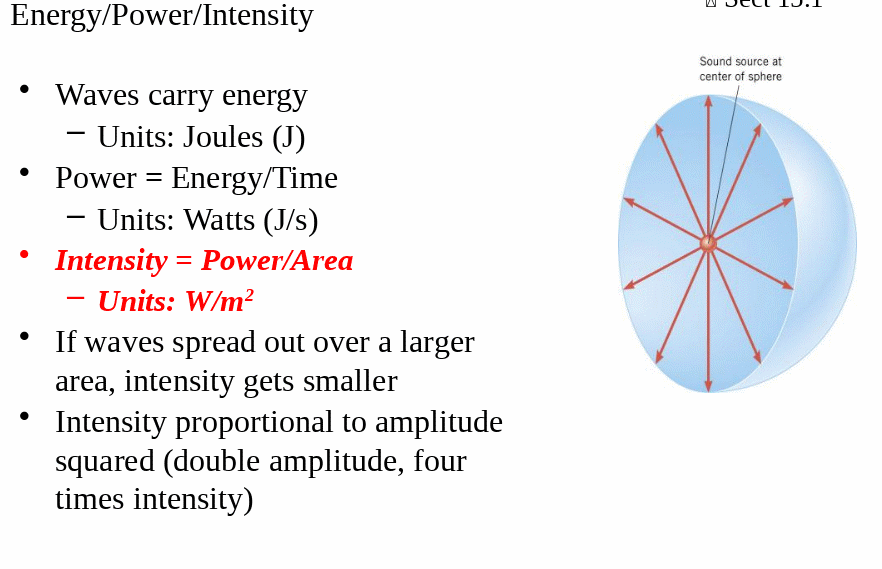
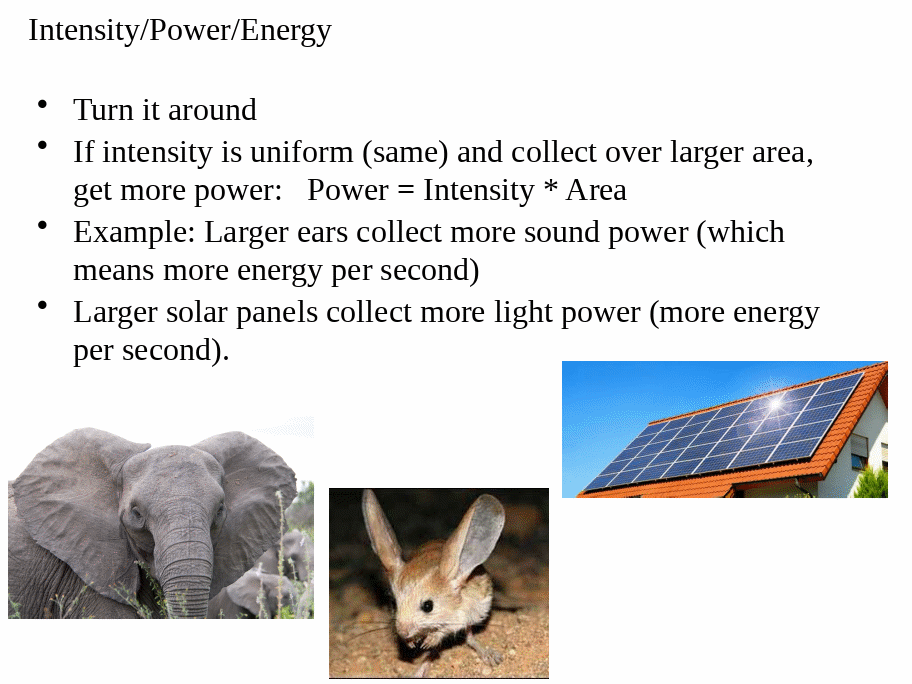
P = E/twith units: Watts [W]
| Electric power | : | light bulb | ~ | 100 W |
| Acoustic power | : | person talking | ~ | 10 -6 W |
 Intensity = Power per unit area
Intensity = Power per unit area
I = P/A
units: W/m 2
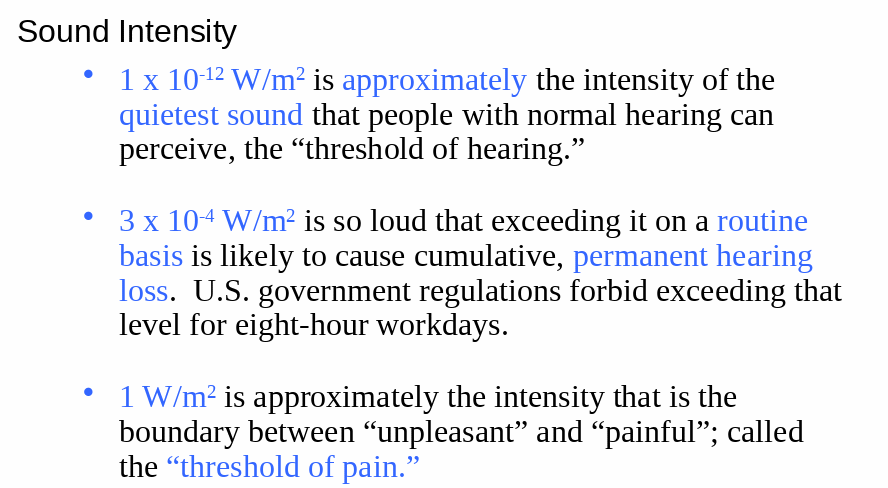
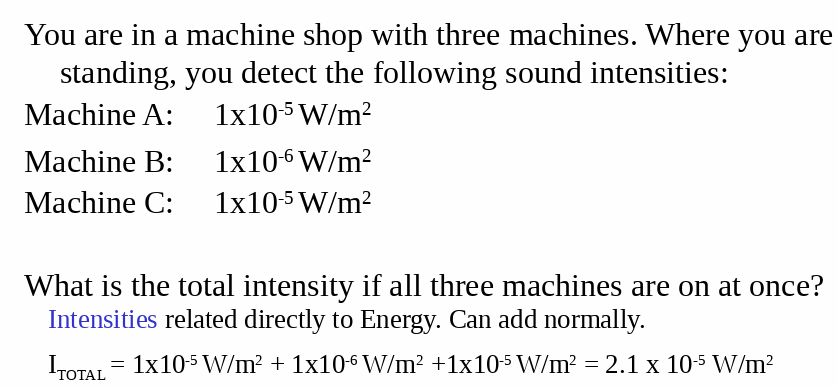
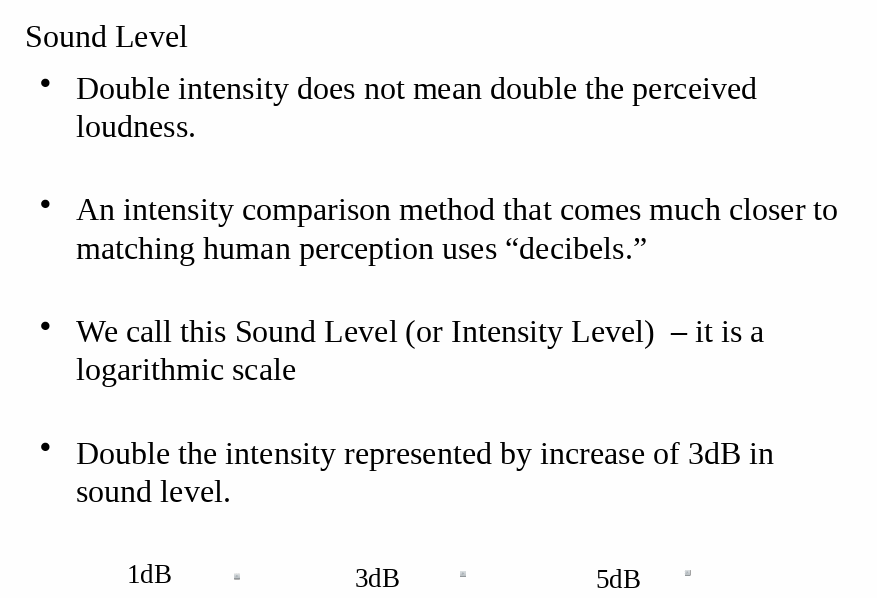
- threshold of hearing: 10 -12 W/m 2
- loudest (below pain): 1 W/m 2
These are 12 orders of magnitude!
Inconvenient for drawing into a diagram.
Scales
There are 2 different scales:
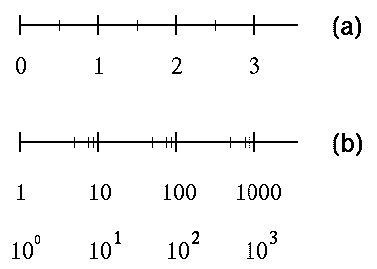
 (a) linear scale
:
(a) linear scale
: - Go from one marking to the next: ADD 1
- Successive equal increments correspond to the addition of a constant
 (b) logarithmic scale
:
(b) logarithmic scale
: - Go from one marking to the next: Multiply by 10
- Successive equal increments correspond to the multiplication by a constant.
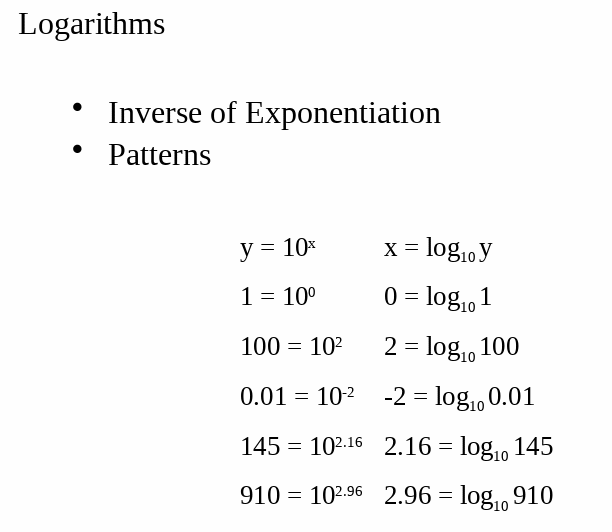
 Sound intensity level (SL)
:
Sound intensity level (SL)
:
with I 0 = 10 -12 W/m 2
[dB] decibel
selected values for the sound intensity level:
| I / I 0 | dB |
|---|---|
| 1 | 0 |
| 2 | 3 |
| 4 | 6 |
| 10 | 10 |
| 20 | 13 |
| 40 | 16 |
| 100 | 20 |
| 1000 | 30 |
| 10,000 | 40 |
| 100,000 | 50 |
This scale is NON LINEAR.
On a logarithmic scale, the markings correspond to equal steps in powers .
| 10 | = | 10 1 | - | log 10= 1 |
| 100 | = | 10 2 | - | log 100= 2 |
| 1000 | = | 10 3 | - | log 1000= 3 |
The decibel scale of sound intensity levels with sounds from various sources is given in this table .
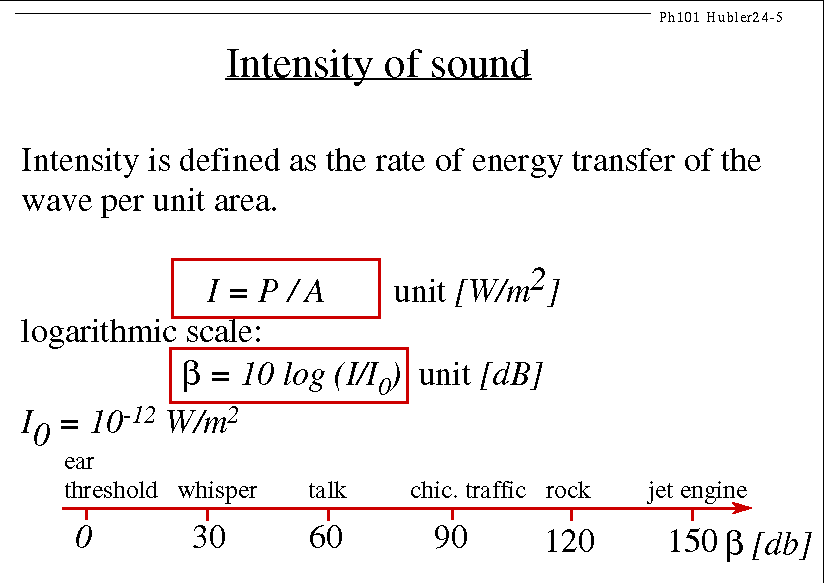
Attention:
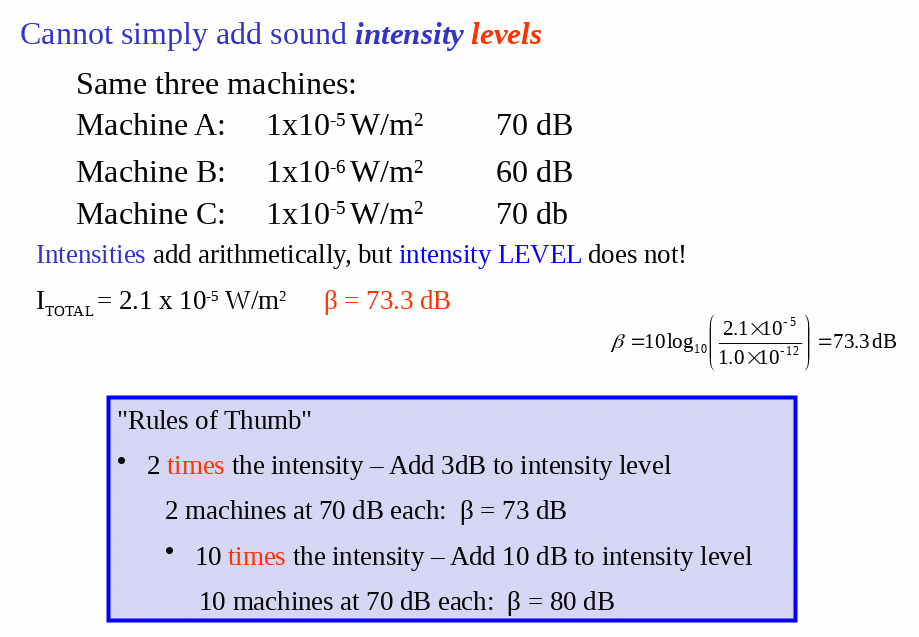
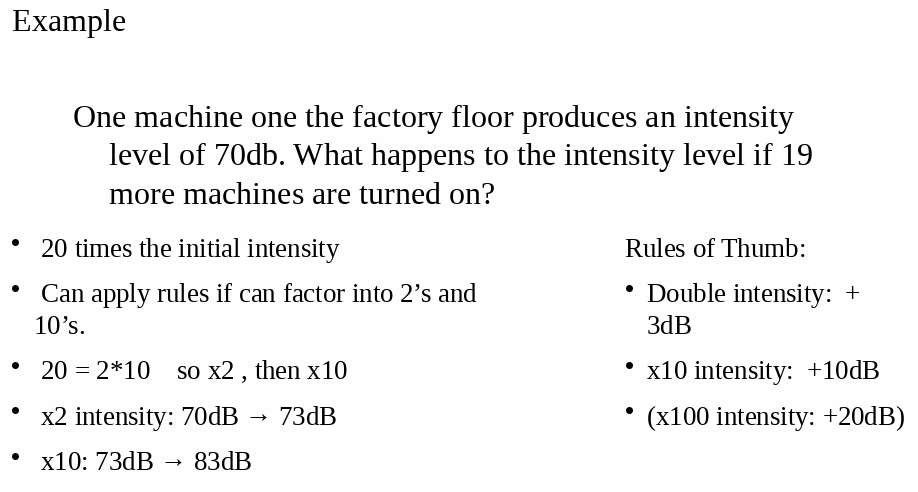
Problems: Buzzers
 Loudness
Loudness
Loudness is a subjective measure and depends on the
individuals perception and physical condition of the ear. 
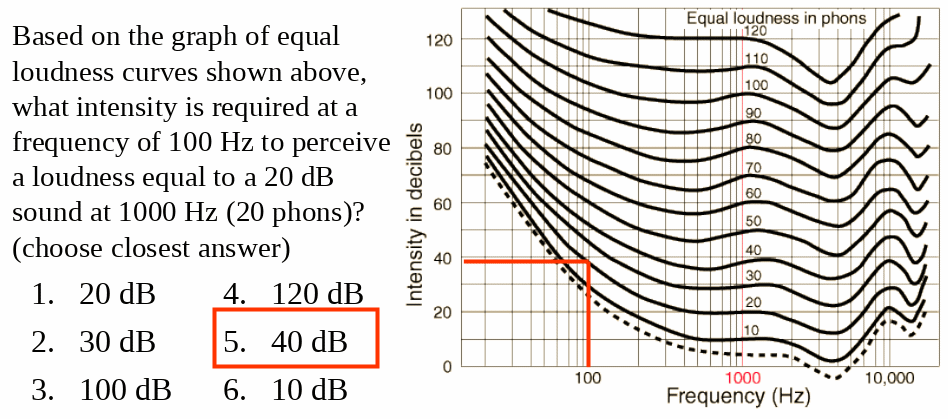
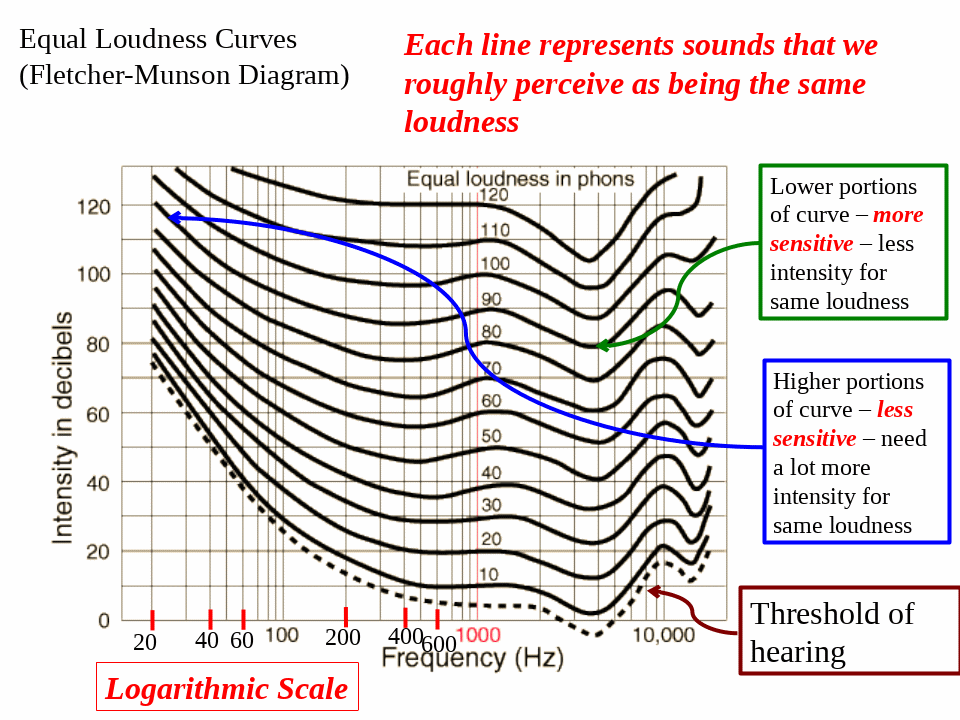
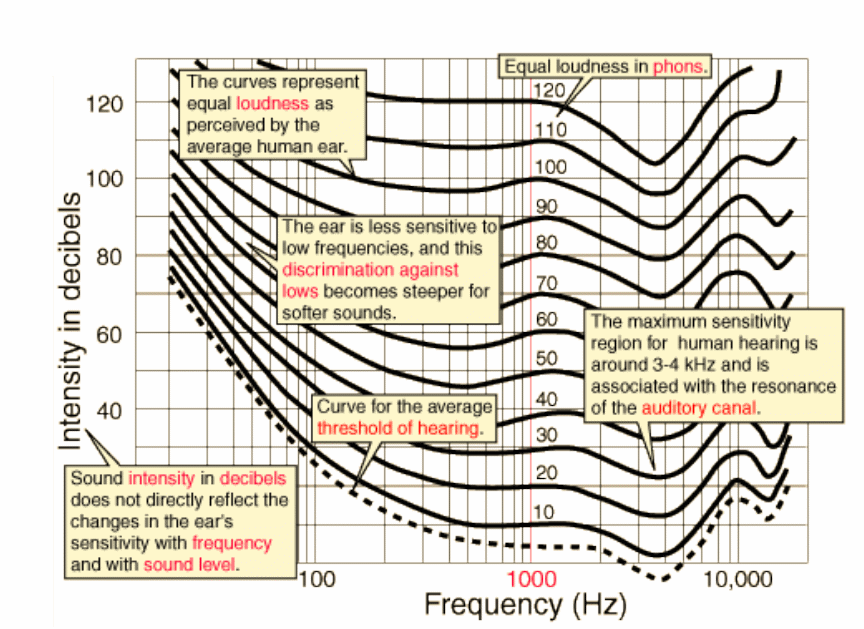
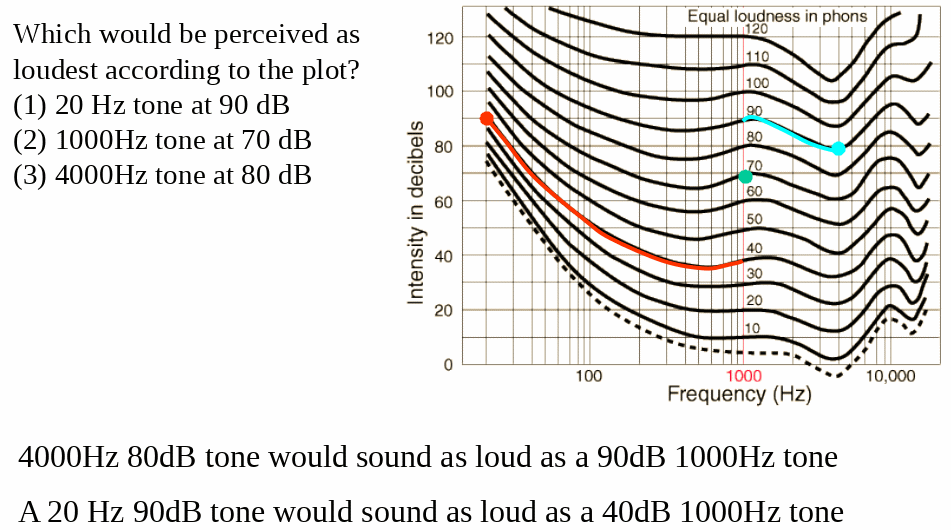
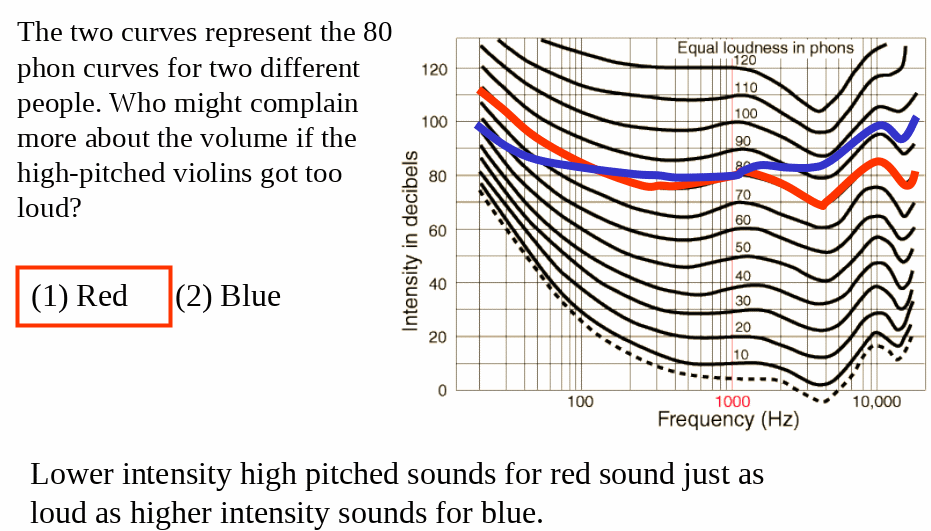
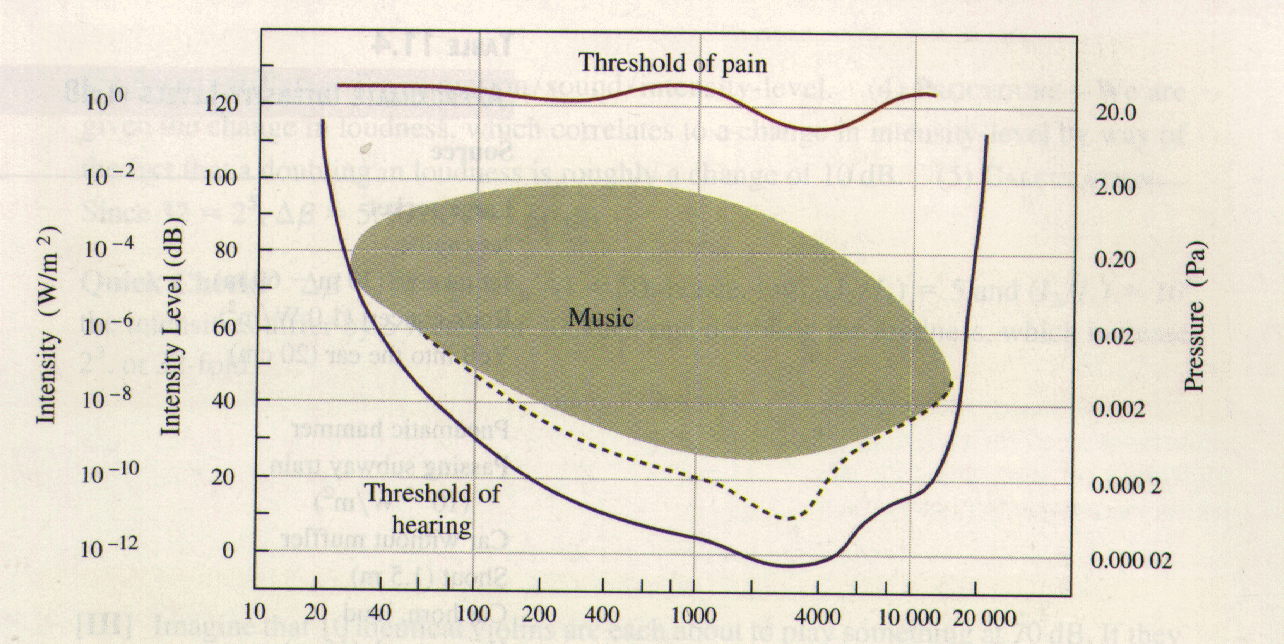
About 1% of the people in the United States can hear sound below the levels of the lower curve. Perhaps 50% can hear below the dashed curve. The shaded region corresponds to the levels of normal music.
Decibles [db] explained: 5 things you need to know

Aug 26 14:27:03 EDT 2019
Contact Information:
(740) 593–9381 | Building 21, The Ridges
Ohio University Contact Information:
Ohio University | Athens OH 45701 | 740.593.1000 ADA Compliance | © 2018 Ohio University . All rights reserved.
